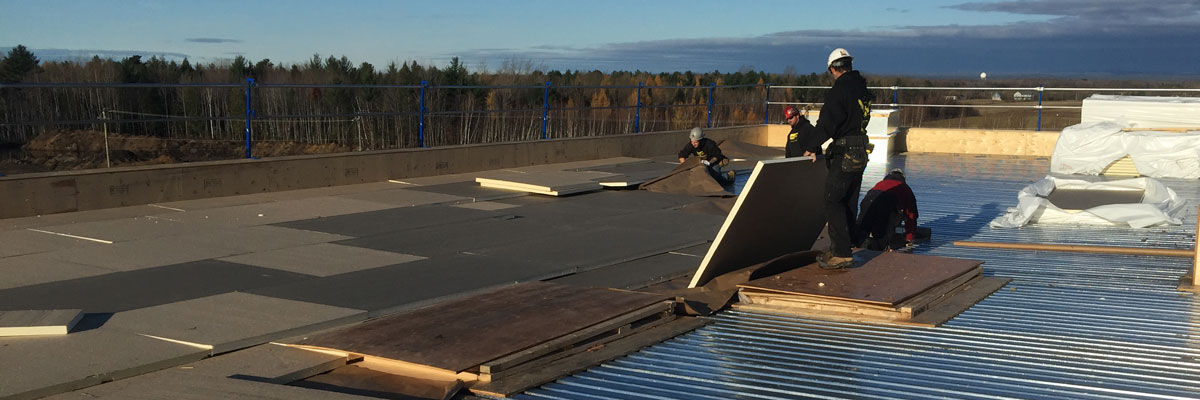Rain gutters are essential to efficient roofing. Without them, rainwater and snowmelt would leak down the exterior walls of your home and lead to water ingress and material degradation. If your rain gutter is damaged, you should definitely replace it before winter.
Here are some tips and tricks to install your rain gutter safely and effectively.
Inspect the bargeboard, soffits and fascia
The durability of your new gutter will depend on the materials it is attached to. Before installing it, take the time to check the condition of the bargeboard, soffits and fascia.
If you notice signs of deterioration (mold, rot, humidity, etc.) during a residential or commercial roof inspection, replace the damaged materials rather than attaching your new gutter and hoping it will hold up.
This will make your installation solid and durable.
Get the right rain gutter and parts for your project
Even if gutters all have the same function, the models offered on the market have different features. Choosing the right gutter will depend on the architecture of your building and your budget. Most roofing contractors recommend aluminum gutters because their long life expectancy makes them a good investment.
You should also choose a gutter with the appropriate diameter for your building. For example, you should choose a 5-inch gutter for a residential building, and a 6-inch gutter for a commercial building.
You will also need to calculate how many parts you will need for installation. Depending on the architecture of your roof, you will need different pieces such as:
- External support (we recommend support every 50 cm)
- Elbows
- Caps
- Corners
- Downspout connectors
- Tips
- Downspout clips
- Fittings
- Joints
- Deflectors
- Step bearings
- Galvanized tapping screws and nails
Get the right tools
To install a roof gutter efficiently, you must have the right tools on hand. Before beginning, make sure you have the following tools with you:
- Hammer
- Screwdriver
- Pencil
- Bubble level
- Hacksaw
- Ladder or scaffolding
- Measuring tape
- Drill
- Plumb line
- File
- Angle bracket
Carefully adjust the slope of your gutter
You probably already know that you should choose an appropriate roof slope for water to drain from the roof, so the same goes for gutters. Water collected by gutters won’t be able to drain without a proper slope, so make sure you create a slope of 0.6 cm (¼ of inch) for 3 m (10 feet).
You can create this slope by using external support every 50 cm (1.5 ft).
Make sure your gutters direct water to an appropriate area
Old, inefficient gutters can lead to your roof leaking, but if they direct water to your foundation, even new gutters can cause water infiltration.
You should therefore install a swivel and extendable or flexible extension or drain plate that will prevent water from leaking into your foundation.
Add a leaf guard to your rain gutter if your property is covered with trees
Dead leaves and pine needles are a gutter’s worst enemy. When they accumulate in a roof gutter, this debris can prevent it from working properly.
If your property is filled with leafy trees and tall conifers, install gutter protection to ensure smooth drainage in the fall.
Be safe
Installing a rain gutter usually involves working from a height. Therefore, be extremely vigilant when undertaking your project.
The ball is in your court!
You are now ready to install your new rain gutter. You should know that if water infiltration damages are caused by poor gutter installation, your insurance company will unlikely compensate you. Call on professionals to avoid any doubts!
At Les Couvreurs Duro-Toit, we specialize in commercial and residential roofing repairs. Contact us for a roof inspection or to replace damaged materials before beginning your rain gutter installation.



